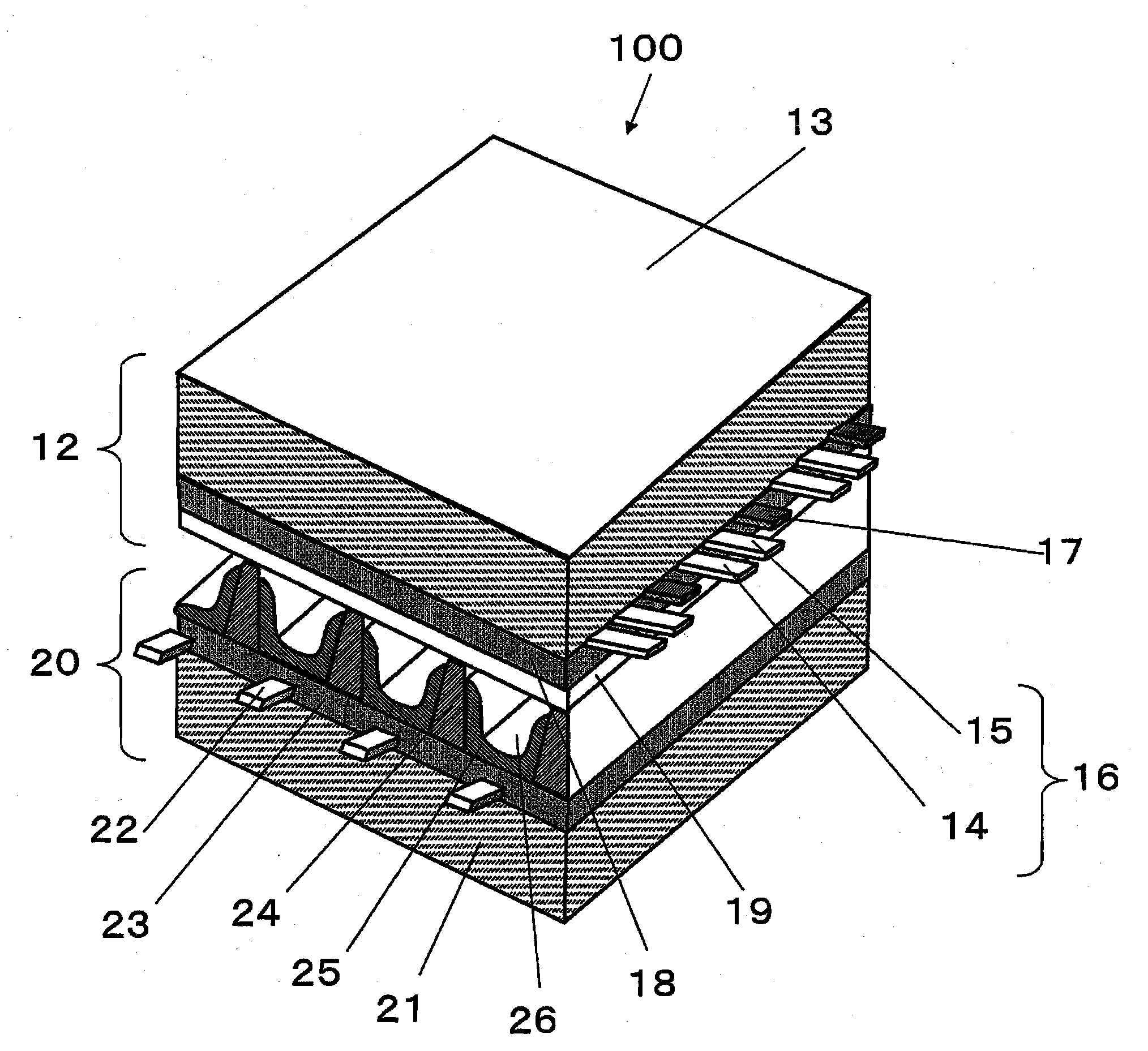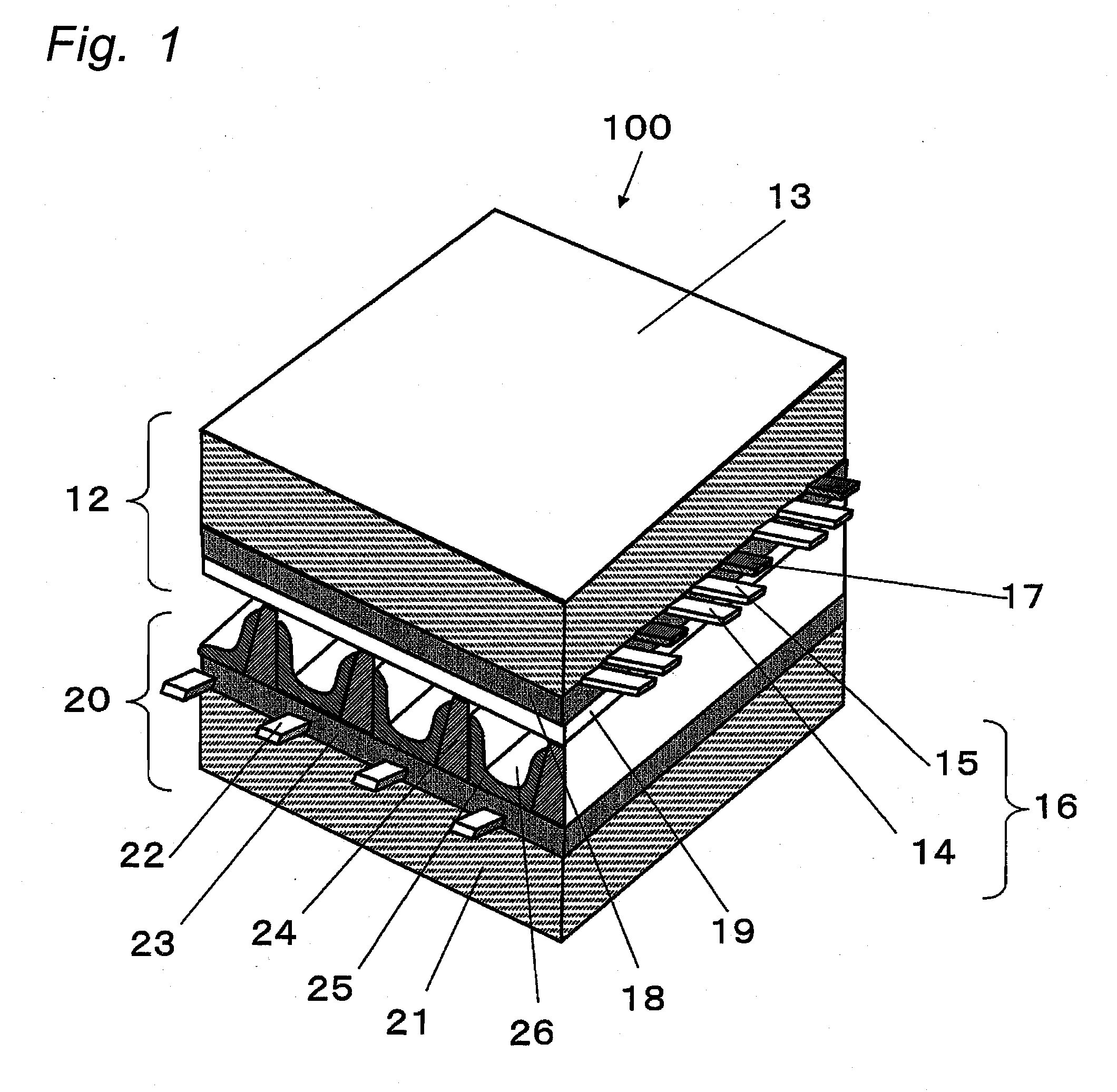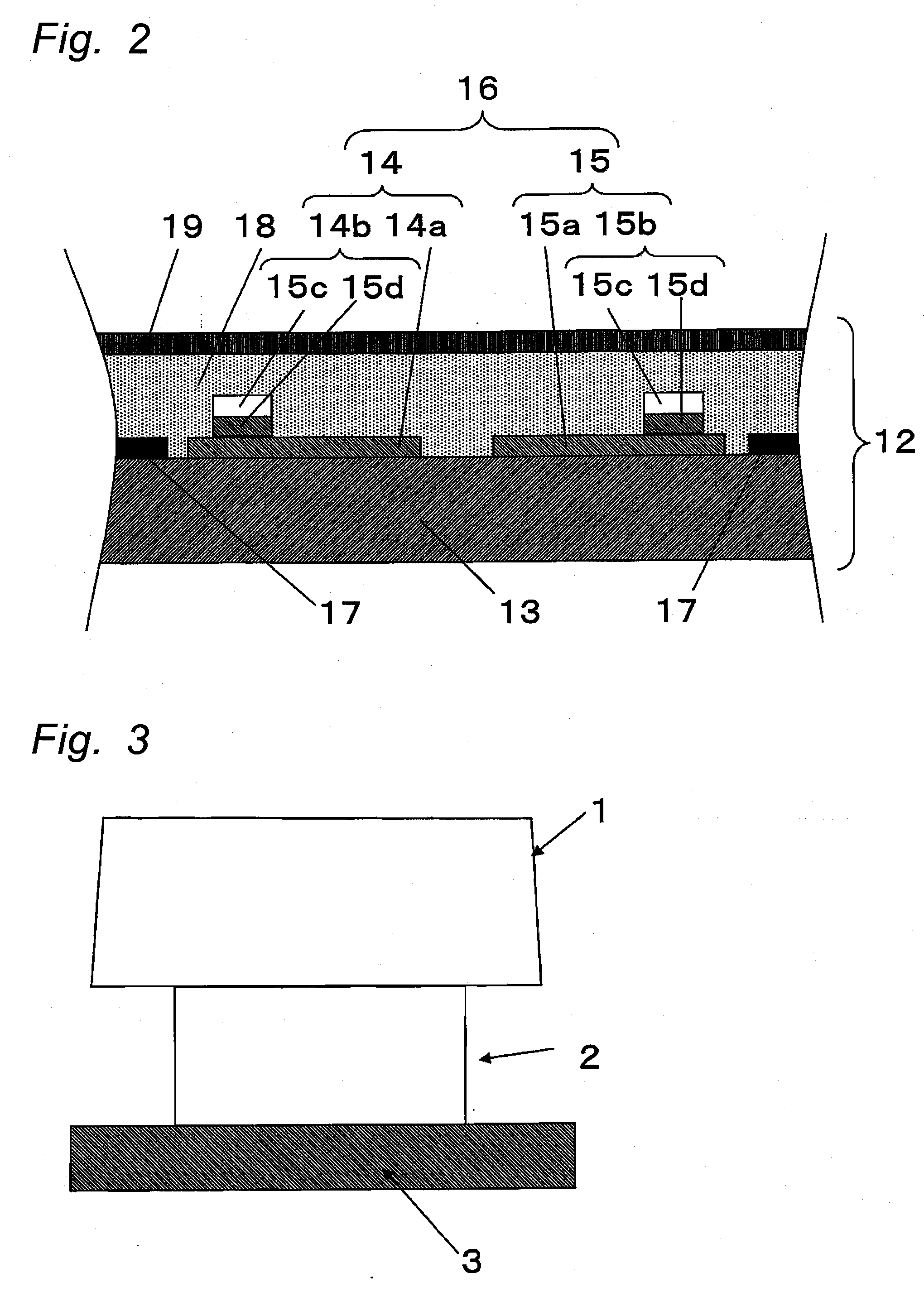Plasma display panel and method for producing the same
a technology of display panel and plasma, which is applied in the manufacture of electrode systems, electric discharge tubes/lamps, discharge tubes luminescnet screens, etc., can solve the problems of insufficient cure of the lower layer to be removed during development, high manufacturing cost, and inability to meet the requirements of a single layer, so as to achieve stable production of display panels, reduce manufacturing costs, and reduce manufacturing costs
- Summary
- Abstract
- Description
- Claims
- Application Information
AI Technical Summary
Benefits of technology
Problems solved by technology
Method used
Image
Examples
example 1
[0159]In Example 1, the width W of the electrode shown in FIG. 7(c) was 120 μm. The exposure was carried out while the distance L from the end portion of the light-shielding member in the widthwise direction of the electrode pattern was changed within a range of 0.5 to 18 μm, and while the width T of the light-shielding member in the widthwise direction of the electrode was changed within a range of 1 to 14 μm; and the electrode pattern was developed. After that, the electrodes were calcined at 600° C. to form the bus electrodes 14b and 15b. One hundred samples were fabricated for each one combination of T and L.
[0160]Next, a paste of a dielectric material was applied by the die coating method, to cover the bus electrodes 14b and 15b, and was dried at 100° C. and calcined at 600° C. to form a dielectric layer with a thickness of 50 μm. The dielectric material paste was prepared by mixing a glass frit which contained bismuth oxide (Bi2O3), boron oxide (B2O3) and silicon oxide (SiO2) ...
example 2
[0164]Electrodes were fabricated in the same manner as in Example 1, except that the width W of the electrode shown in FIG. 7(c) was set at 40 μm.
PUM
 Login to View More
Login to View More Abstract
Description
Claims
Application Information
 Login to View More
Login to View More - R&D
- Intellectual Property
- Life Sciences
- Materials
- Tech Scout
- Unparalleled Data Quality
- Higher Quality Content
- 60% Fewer Hallucinations
Browse by: Latest US Patents, China's latest patents, Technical Efficacy Thesaurus, Application Domain, Technology Topic, Popular Technical Reports.
© 2025 PatSnap. All rights reserved.Legal|Privacy policy|Modern Slavery Act Transparency Statement|Sitemap|About US| Contact US: help@patsnap.com



